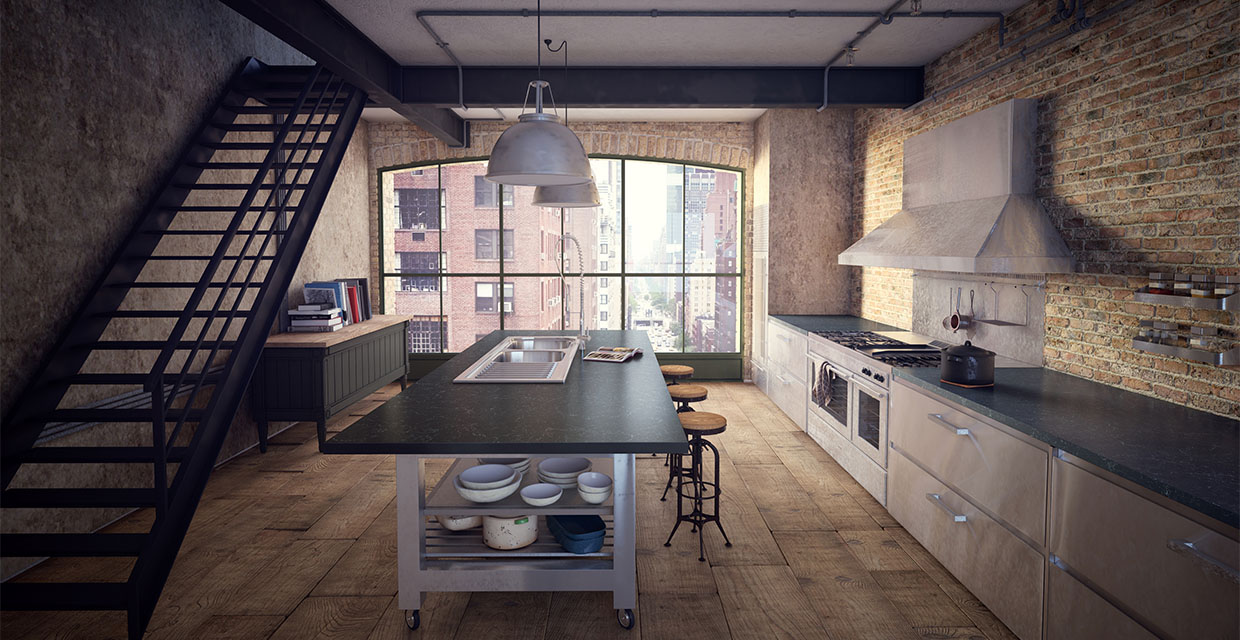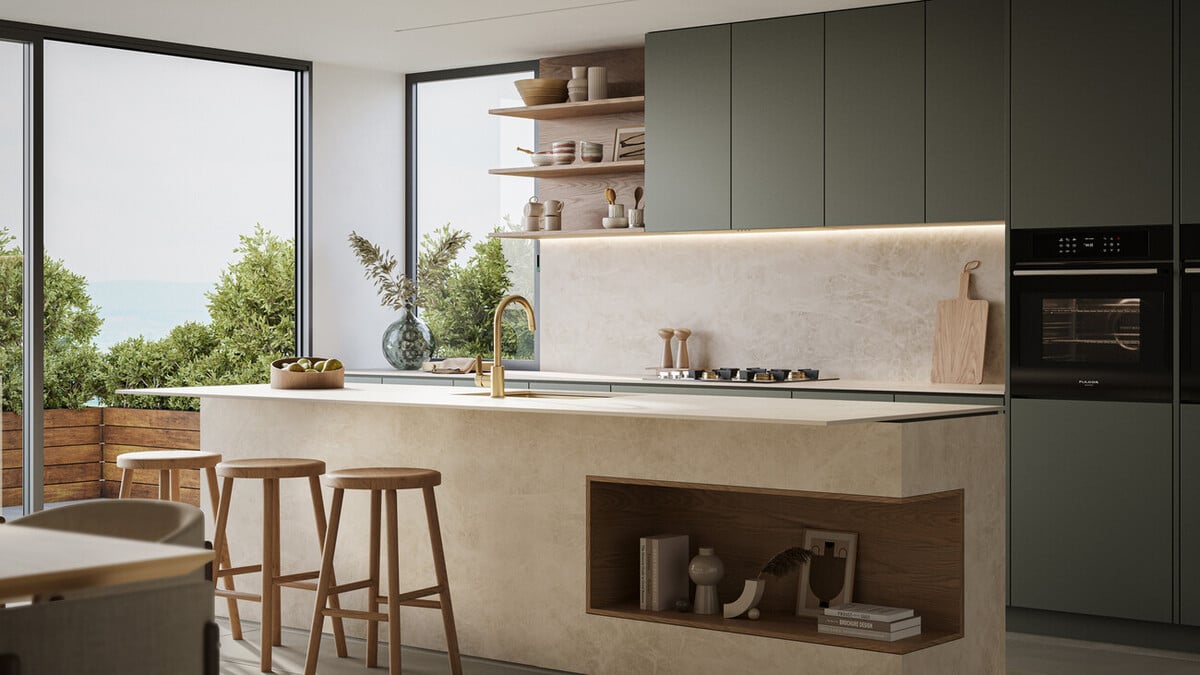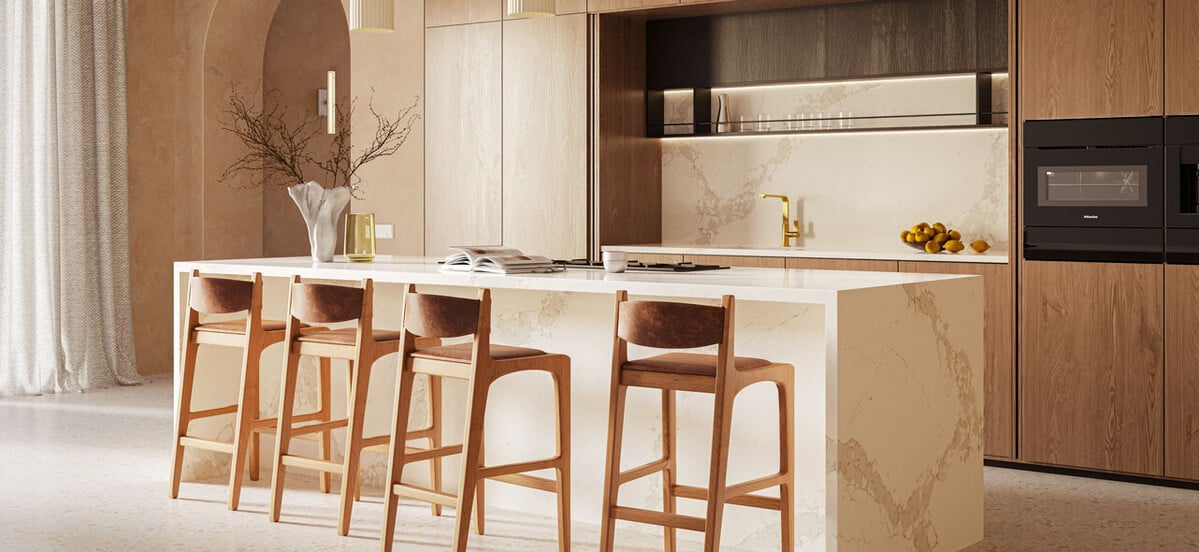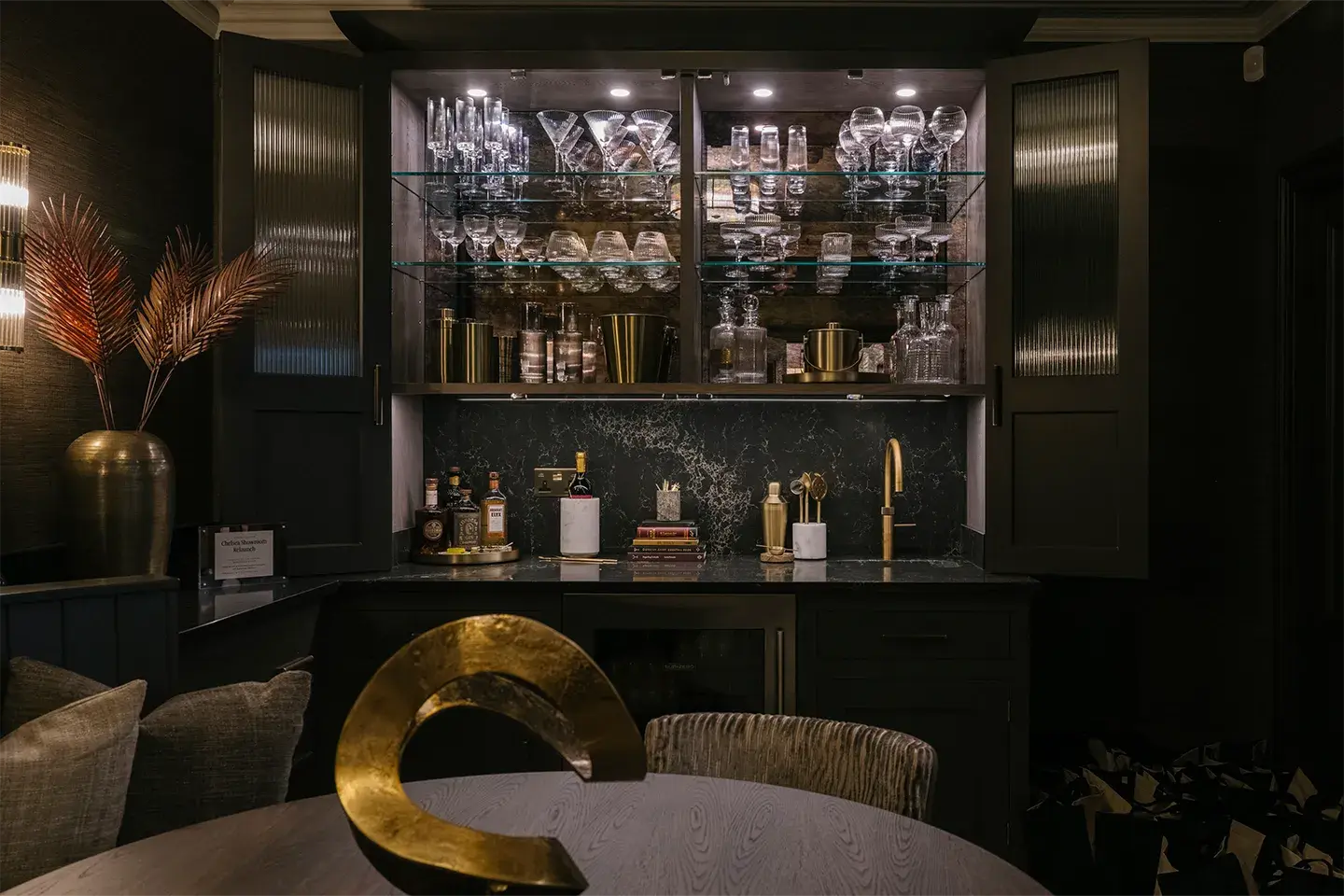
Planning a new kitchen is probably one of the biggest home projects you’ll ever undertake. Not least because today’s kitchens are about so much more than simply cooking. Entertaining, relaxing and homeworking are just a few of the 101 things that most of us use our kitchens for, so careful and considered kitchen design is a must.
But where to begin? Well, a good way to start the kitchen design process is to jot down all the things you and your family like to do in your existing kitchen area. Then give some thought as to how easy, convenient and enjoyable it is to do those things. For instance, if you like to cook, does your current kitchen allow you to do it in the way you would like to? Do you have all the appliances you’d like to? Is there enough pantry space – indeed, would you perhaps like to create a walk-in pantry or storage area within your new kitchen? Perhaps your kitchen planning could consider an oversized kitchen island that would multi-task as a surface area that could also be used for prepping, entertaining and eating?
When you’ve worked out how your kitchen needs to function, it’s time to give some consideration to another set of basics – shape, layout and lighting. It sounds obvious, but from galley to L-shaped, kitchens come in all sorts of sizes. Identifying yours and understanding how you can maximise its space to best effect is half the battle when it comes to kitchen design.
Understanding how you will use your kitchen’s surfaces will enable you to make a thoughtful decision as to what type of surface materials will be most appropriate. Although natural materials such as stone, granite, wood and slate look wonderful, they all have their disadvantages. And from their initial installation to maintenance and upkeep requirements, it might be that you could consider versatile alternatives such as quartz.
Good quality quartz kitchen worktops have a high percentage of natural materials; combined with a sophisticated blend of environmentally safe additives and pigments, they usually have a pleasing, if not stunning aesthetic appearance. Best of all, quartz surfaces are far more flexible than their 100% natural counterparts. It is often possible to mould or form them and when it comes to daily wear and tear, there is no doubt that quartz – with its resistance to scratching, stains and, to some degree, heat – is an outright winner. Coupled with its low-maintenance characteristics – quartz does not require sealing or honing and usually needs only a spritz of soapy water – it is the perfect choice for a busy, multi-tasking kitchen.
The other advantage of using quartz for your surfaces is that you can often continue to use the material throughout other areas or ‘zones’ of your kitchen. Modern quartz compositions are so strong and durable that it is entirely possible to use quartz for applications beyond worktops. Of course, brands differ, but quartz can also be used successfully – and to great effect – as cladding for walls and furniture and even for flooring.
The latest palettes of quartz colours are beautifully neutral – without being dull. Earthy, creamy, chalky or slatey…such is the sophistication of modern quartz composition that you’re sure to find a colour that will complement your kitchen’s cabinetry and overall colour scheme perfectly. Natural, organic colours offer a great deal of longevity and if one of your planning objectives is to create a kitchen that will look as great in 5 or even 10 years’ time as it does when showroom-fresh, then choosing easy-going, accommodating neutral colours – perhaps with the added interest of textural detail – is an excellent way to succeed.
Colours from Caesarstone’s Classico Collection all work on this premise – and shades such as ‘Oyster’ and ‘Shitake’ are all best-sellers for a reason: their ability to harmonise with a wide range of materials and their day-in, day-out durability.
Finally, a few last words of wisdom about your kitchen design. Take photos and make sketches at every stage. Create moodboards and make the most of social media platforms such as Pinterest – they are a kitchen planner’s dream. Plus, you can link imagery and information from manufacturers’ websites directly to your Pinterest, Tumblr and other boards. It’s a great way of curating what can turn out to be an awful lot of information. But trust us, it’ll all be worthwhile in the end!


